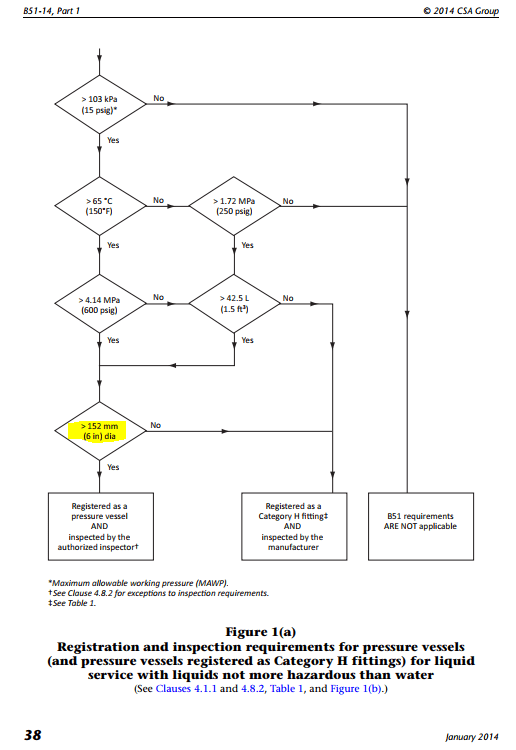wydim
Mechanical
- May 29, 2018
- 40
Hello all,
I'm the design engineer and working for the manufacturer.
I need to follow the decision diagram in CSA B-51 figure 1a to know if a dimple jacket welded on my vessel is to be inspected by the AI or by manufacturer

just to be clear : the vessel is NOT a pressure vessel. My question is related to the DIMPLE JACKET only. We have a CRN for the dimple jacket design
So if I follow the diagram :
more than 15 psig, yes
more than 150°F, yes
more than 600psig, no
more than 1.5ft3, yes
more than 6in dia ????? yes, my vessel is more than 6in, technically the DJ outer dia is more than 6in. but can I interpret this question as the THICKNESS of the fluid layer in the DJ, which is 0.1875in.
what if I would install/weld my DJ to a flat plate. what is the dia. of a flat plate ? infinity?
thanks for your input
I'm the design engineer and working for the manufacturer.
I need to follow the decision diagram in CSA B-51 figure 1a to know if a dimple jacket welded on my vessel is to be inspected by the AI or by manufacturer

just to be clear : the vessel is NOT a pressure vessel. My question is related to the DIMPLE JACKET only. We have a CRN for the dimple jacket design
So if I follow the diagram :
more than 15 psig, yes
more than 150°F, yes
more than 600psig, no
more than 1.5ft3, yes
more than 6in dia ????? yes, my vessel is more than 6in, technically the DJ outer dia is more than 6in. but can I interpret this question as the THICKNESS of the fluid layer in the DJ, which is 0.1875in.
what if I would install/weld my DJ to a flat plate. what is the dia. of a flat plate ? infinity?
thanks for your input
